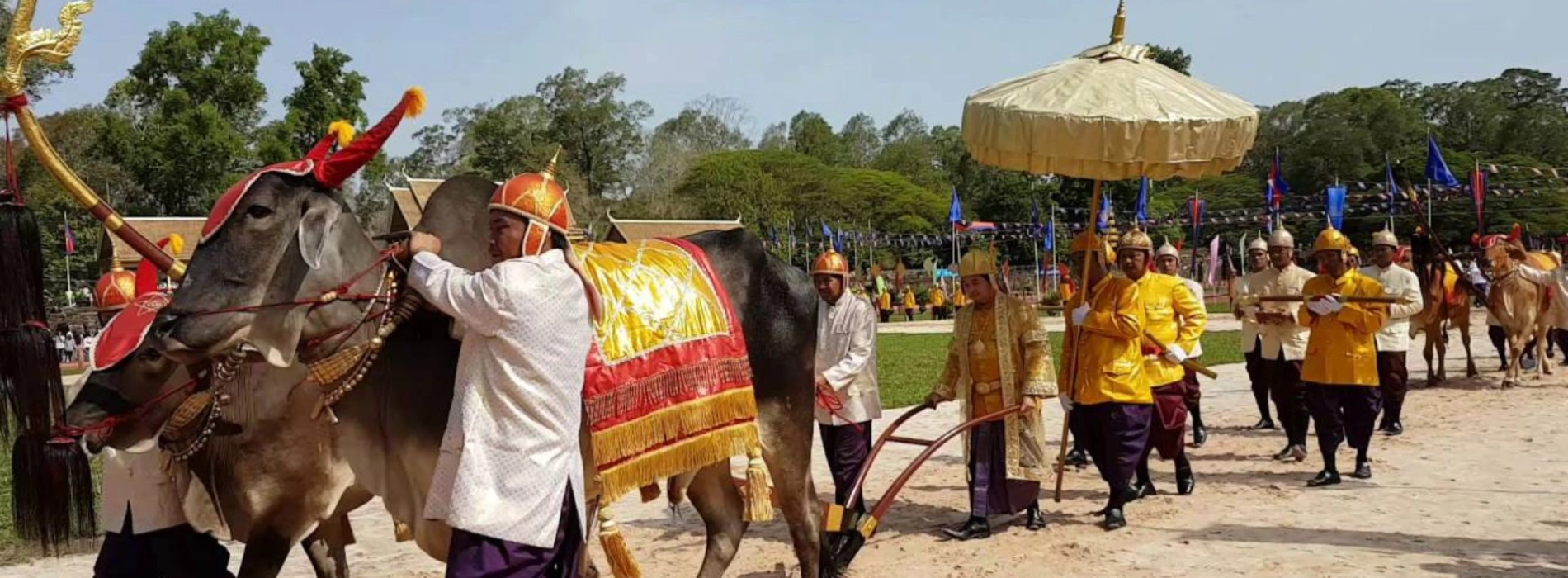
The Royal Plowing Ceremony, otherwise referred to as Preah Reach Pithi Chrot Preah Neangkol in Khmer, is an annual religious ceremony in Cambodia that marks the beginning of the rice farming season. The ancient practice fuses religious beliefs, royal tradition, and agricultural practice, which are all proof of the nation's strong affection for agriculture and the monarchy.
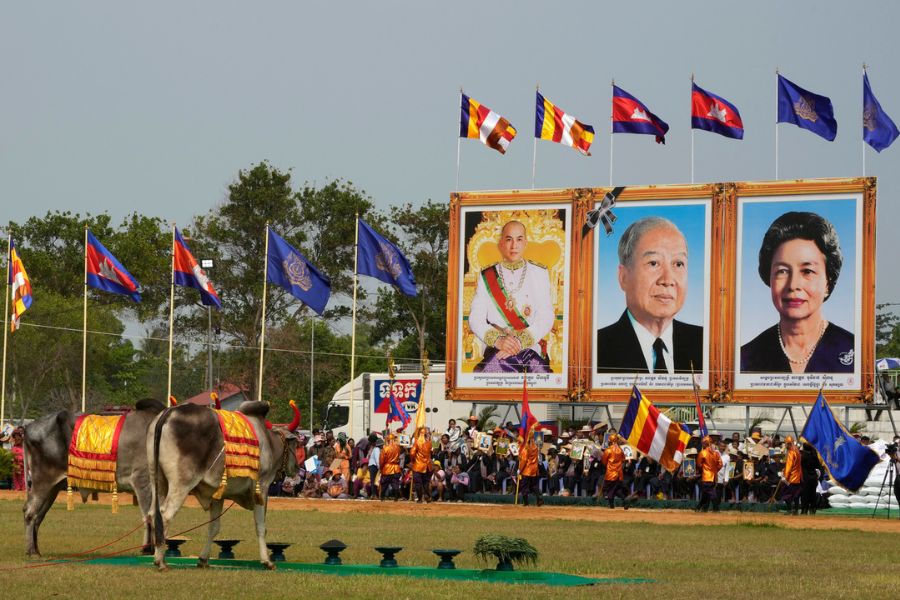
Image of the Royal Plowing Ceremony in Cambodia (Source: Wikipedia)
Cambodia's Royal Plowing Ceremony is one of the most religious and symbolic traditional festivals in Southeast Asia, putting emphasis on Cambodian royal ceremonies pertaining to agriculture and the lunar calendar. Referred to as "Preah Reach Pithi Chrot Preah Neangkol" by Cambodians, the traditional ritual marks the official start of the rice crop season. It brings together Khmer culture, religion, and royal tradition into one ceremony. The ceremony is not just cultural but also has serious agricultural consequences.
The highlight of the ceremony is when sacred oxen are taken to plow ceremonial furrows by traditionally dressed Khmer officials appointed by the court. The oxen are offered seven symbolic foods: rice, corn, sesame, beans, water, grass, and wine after plowing. What they consume is believed to predict the agricultural fortunes of the year. For instance, if the oxen eat rice or corn, it means there will be an abundant harvest.
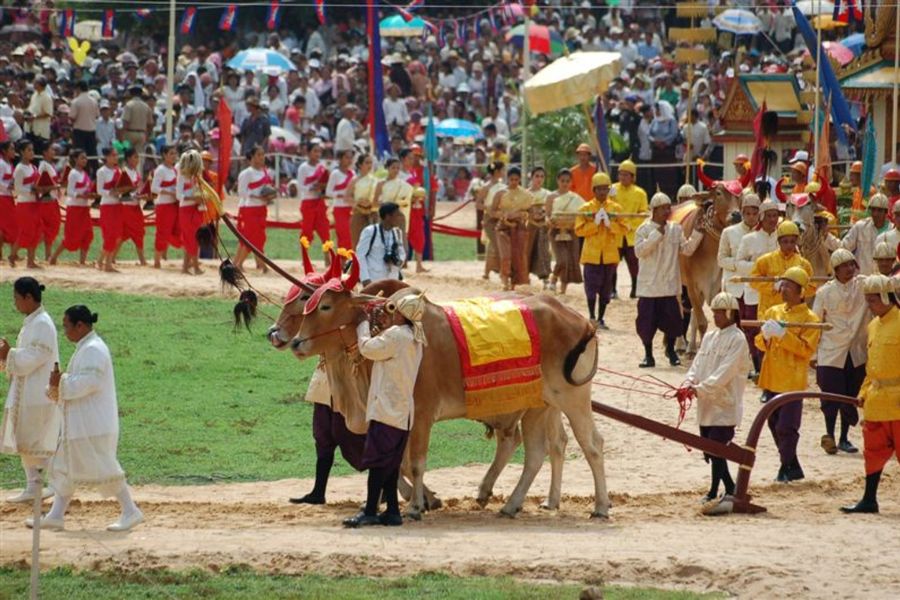
Sacred oxen (Source: TheJourneys)
This mystical forecast is not taken lightly. In a nation where the earth supplies food for over 70% of the people, such prophecies dictate plans during the seasons for farmers. It's a ceremony where spiritual advice and economic necessity converge. It's something more than a ritual, an echo of Cambodia's deep respect for nature, monarchical tradition, and convention.
The history of the Royal Plowing Ceremony dates more than a thousand years ago with the influence from indigenous Hindu and Buddhist practices. Borrowed directly from Brahminical Indian rites originally, the ceremony was adapted when being under the Khmer Empire to account for Cambodia's rural lifestyles as well as the religious power of the King.
In Angkorian days, the King was a half divine ruler with not just political but also spiritual and agricultural leadership. Plowing symbolized his divine duty to fertilize the land and provide security to the people. This connection between the monarchy and the ground remains at the center of the ritual to this day.
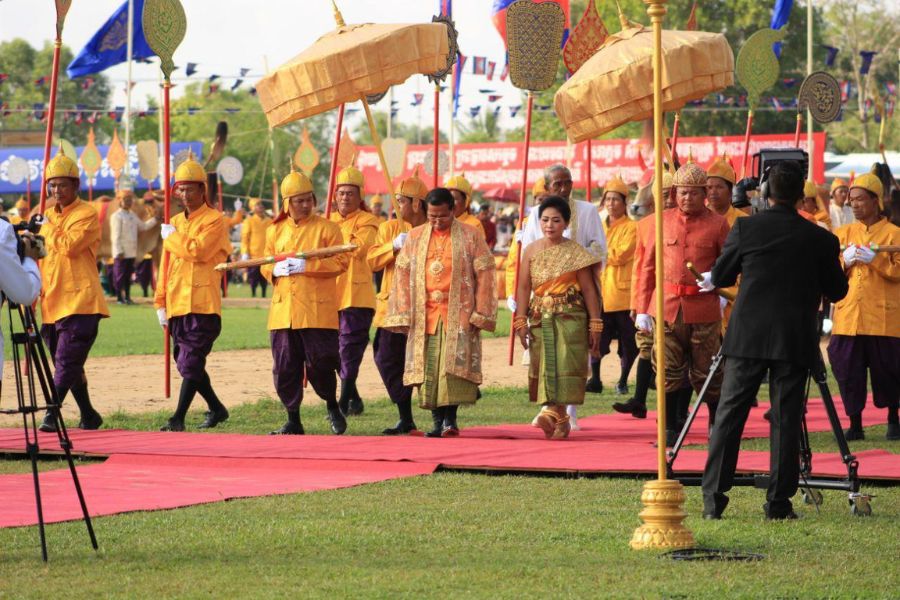
Historical background of the ceremony (Source: Thailandfoundation)
Like most of Cambodia's ancient festivals, the Royal Plowing Ceremony was prohibited during the Khmer Rouge regime but later reinstated as part of Cambodia's cultural rehabilitation. It has since the 1990s become a national holiday and public celebration of Khmer identity again.
The Royal Plowing Ceremony annually takes place in May, just before the rainy season begins. The exact date is different every year since it follows the Khmer lunar calendar. Nevertheless, it usually occurs in the first half of May. It aligns with agroecosystems and occurs when there is a period changing from dry to wet season in agriculture hinge time for rice cultivation.
May is culturally rich in Cambodia. It comes after Khmer New Year and before planting season. One of the Cambodian highlights in May is the Royal Plowing Ceremony, giving a religious and symbolic start to the farming calendar.
The ceremony is typically conducted in front of the National Museum or near the Royal Palace in Phnom Penh. It's a grand public ceremony, attended by members of the royal family, senior monks, government officials, and thousands of tourists and locals.
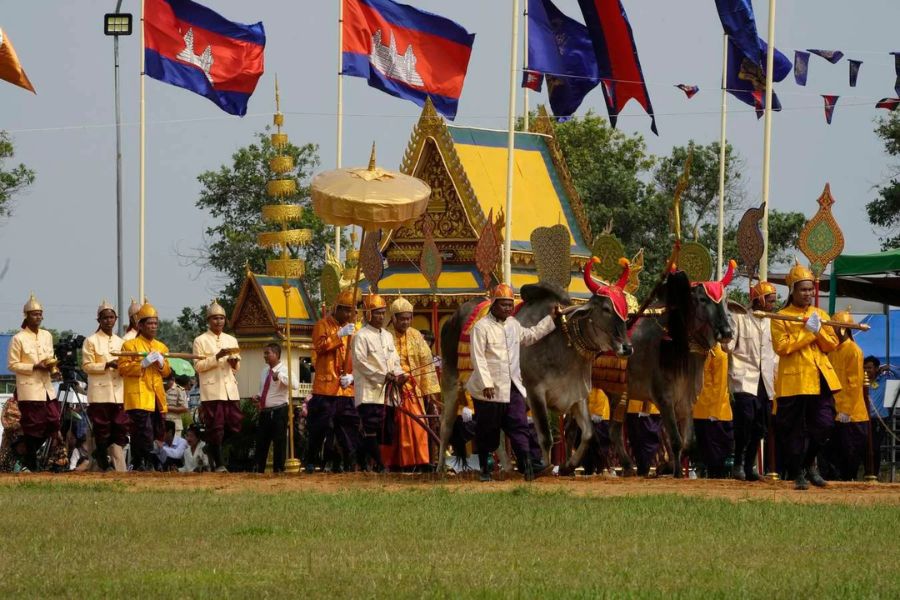
The ceremony take place in May (Source: TheBetterCambodia)
Preparations for the ceremony begin several days in advance. Three days prior to the festival, royal Brahmin priests undergo rituals calling upon the gods of agriculture and the four cardinal directions. These rituals are performed with the intent to pray for good weather and rich harvests.
The holy ground, which generally takes its place at Veal Preah Meru Square near the Royal Palace in Phnom Penh, is meticulously arranged. The grounds are cleaned and ceremonial frames erected. The royal oxen, by name Usapheak Reach, are selected and prepared for use. They are holy animals and are adorned with beautiful ornaments.
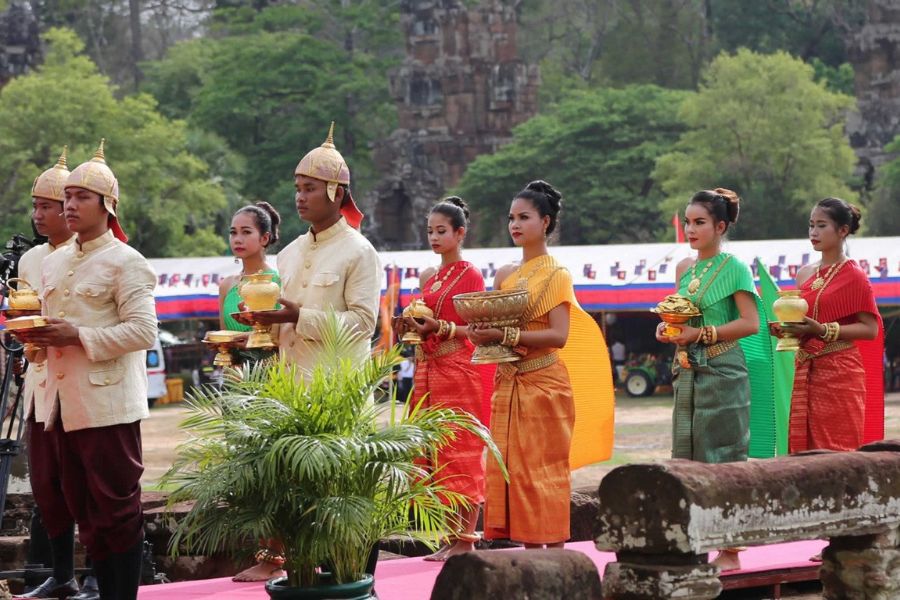
Before the ceremony (Source: OfficeHolidays)
Read more: The main festivals in Cambodia
On the ceremonial field, dignitaries, monks, and the people assemble on the day of the ceremony. The ceremony is performed under the chairmanship of the King or a royal representative, normally the Sdach Meak, who acts on behalf of the monarch. The Sdach Meak is supported by the Preah Mehuo, representing the Queen. The ceremony begins with the Sdach Meak guiding the royal oxen to plow the ground in three clockwise circles, symbolizing the cultivation of the ground for planting.
The Preah Mehuo plows behind them, planting seeds in the furrows. This initiates the beginning of the farm season and the hope for a good harvest. The oxen are then led over seven trays of gold with rice, corn, sesame seeds, beans, grass, water, and wine as their offering. The royal astronomers interpret the oxen's selection on these trays to predict the farm weather of the coming year.
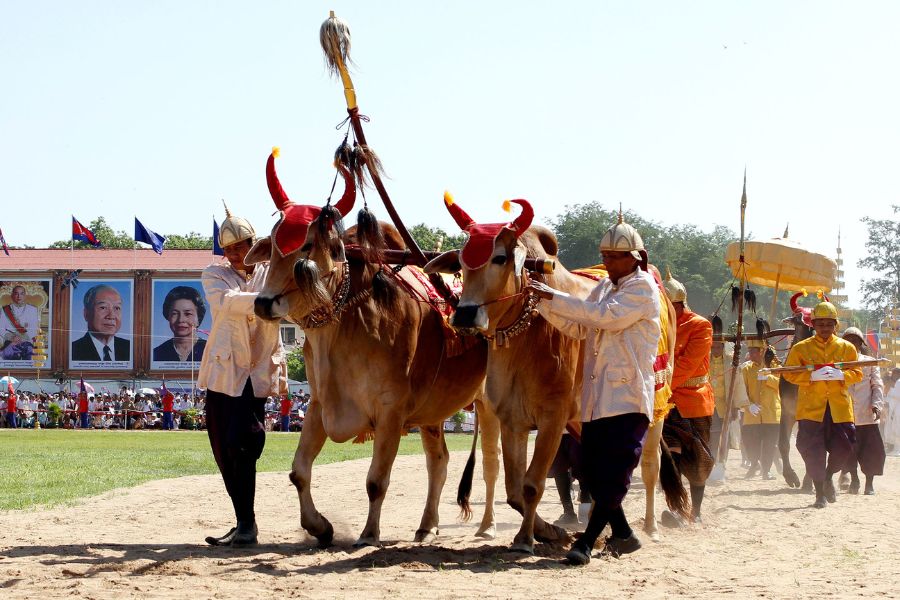
During the ceremony (Source: houstonchronicle)
After the oxen are selected, royal astrologers declare their meanings to the audience. The predictions are not to be taken lightly by farmers and can affect agricultural plans for the year. The ceremony is finished with traditional dances and blessings by monks, accentuating the cultural and religious nature of the ritual.
The Royal Plowing Ceremony is not only a ritual to mark the beginning of the planting season but also a reaffirmation of the close relationship between the Cambodian monarchy, agriculture, and the people's religious beliefs. It is a potent expression of the nation's heritage and an enduring symbol of hope and prosperity.
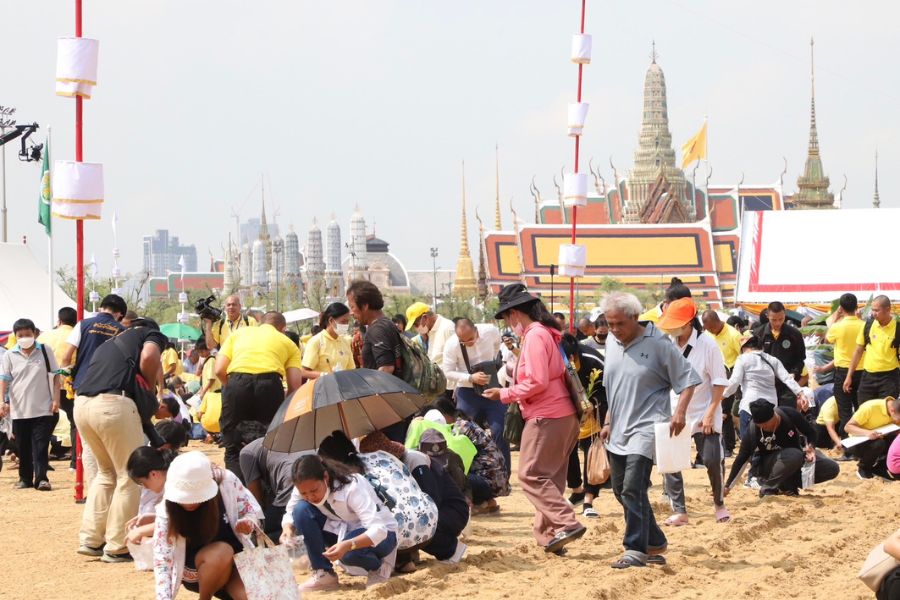
After the ceremony (Source: KhaosodEnglish)
In today's transforming Cambodia, the Royal Plowing Ceremony remains a lifeline to Cambodian tradition. It is a source of shared rural roots and the role of cycles of seasons in religious and material life. Even in the days of urbanization and cyber culture, the values inherent in the ritual such as respect for nature, religion, and leadership remain of great significance.
It is also a significant contributor to the patronage of Cambodian cultural tourism. Phnom Penh is inundated with tourists in May to see one of the most breathtaking and iconic Cambodian royal ceremonies. The ritual sheds light on traditional Khmer beliefs and emphasizes Cambodia's determination in upholding its unique cultural heritage. The Royal Plowing Ceremony also enlivens the setting.
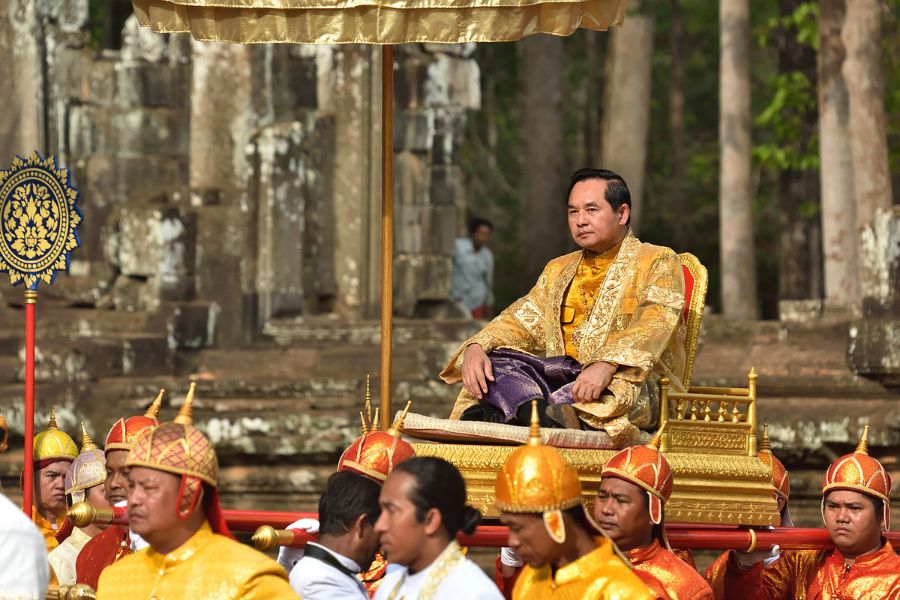
Royal plowing ceremony today (Source: AboutAsiaTravel)
With the impacts of global warming in terms of rain and cropping cycles, the old ritual in symbolic terms appeals to people to be attuned to natural forces. It is an occasion of national reflection on how human activity needs to be aligned with the ecological cycle.
The Royal Plowing Ceremony is a glimpse into the soul of Cambodia, its agrarian pride, traditional heritage, and ongoing royal tradition. To witness this ceremony is not a cultural holiday tour, but an encounter with the Khmer heritage and living pulse. If you're ready to go to Phnom Penh, Angkor Wat, or deeper into the history of the Khmer, Asia King Travel will bring you there.
Read more: Experience the sacred Water Blessing Ceremony in Cambodia